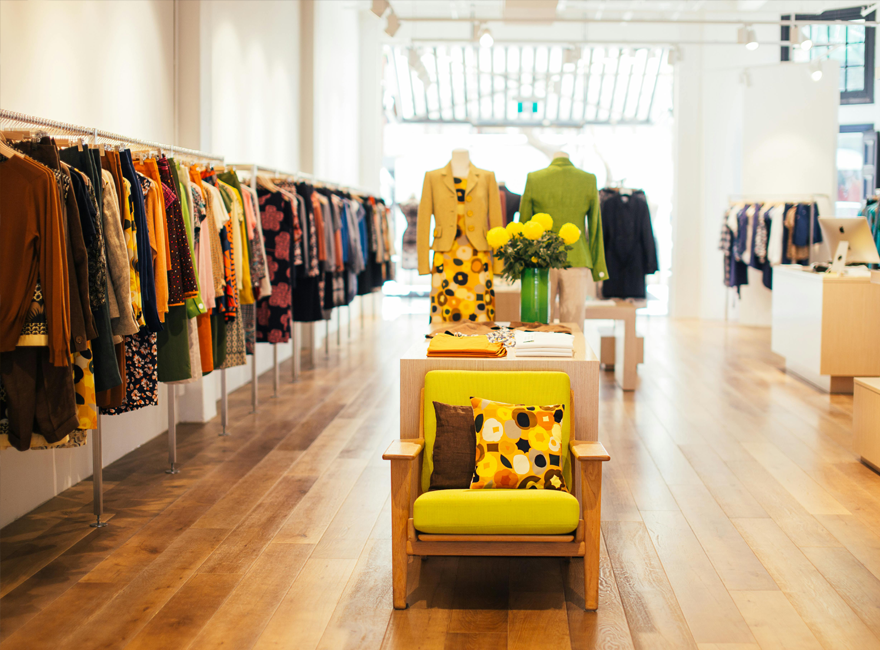
Types of Wholesale Purchasing Methods
In the dynamic world of fashion retail, selecting the right wholesale purchasing method can significantly impact your business strategy and profitability. Here’s an overview of the primary types of wholesale purchasing, each offering unique advantages for your clothing business.Off-Price Wholesale
Off-Price Wholesale is distinct in its focus on providing brand-name and designer products at significantly lower prices. This reduction is often due to overstock, end-of-season clearance, or excess production. Retailers leveraging off-price wholesale can offer high-quality, sought-after items at competitive prices, attracting a broad customer base. Advantages: Access to premium brands at lower costs, appeal to cost-conscious consumers with high-quality preferences, and opportunities for high-margin sales. Considerations: Product availability may be inconsistent, and rapid decision-making is often required to capitalise on the best deals.Bulk Wholesale
Bulk Wholesale involves buying large quantities of merchandise directly from manufacturers or distributors at a reduced cost. This method is ideal for retailers with a high volume of sales in standard or staple items, as it allows for significant savings on per-unit costs. Advantages: Economies of scale, lower per-unit cost, and ample stock for high-demand items. Considerations: Requires substantial upfront investment and storage space; risk of overstock on less popular items. Plus, you can’t select a lot of items.Light Bulk Wholesale
Light Bulk Wholesale offers a compromise between large-scale bulk orders and the flexibility of smaller purchases. Retailers can buy products at wholesale prices but with lower minimum order requirements than traditional bulk purchasing. Advantages: Lower risk with reduced minimum orders, easier inventory management, and accessibility for small businesses. Considerations: Depending on the supplier, it can have a higher cost per item compared to larger bulk orders and potentially limited selection.Direct Wholesale
Direct Wholesale means purchasing directly from the product manufacturers or brand owners, eliminating intermediaries. This method often allows for price negotiations, exclusive deals, and access to the latest product lines. Advantages: Potential for lower prices, direct communication with suppliers, and access to exclusive products. Considerations: Higher minimum order quantities and larger upfront investments may be required.Dropshipping Wholesale
Dropshipping is a model where you sell products without holding inventory. When a sale is made, the product is shipped directly from the wholesaler to the customer. This method is excellent for testing new products or markets with minimal risk. Advantages: Low upfront investment, no need for storage space, and flexibility in product offerings. Considerations: Less control over shipping and stock, the potential for longer customer wait times, and generally lower profit margins.How to Select the Right Wholesale Supplier
Choosing the right wholesale supplier is an important decision that can significantly influence the success of your clothing business. It's about more than just finding someone who can supply you with clothing; it's about partnering with suppliers who understand your vision and can meet your needs. Here are key considerations and steps to ensure you select the right wholesale supplier:Know Your Target Audience
Before you even start looking for suppliers, have a clear understanding of your target audience. What are their preferences? Do they gravitate towards premium brands, or is there a niche market for vintage styles? Understanding your audience's preferences will help you determine which suppliers can best meet their demands.Research Potential Suppliers
Once you have a solid grasp of your audience's preferences, begin researching potential suppliers. Look for suppliers that specialise in the type of clothing you want to sell. For premium brands, seek out suppliers known for their off-price wholesale deals on high-quality, branded merchandise. If your target market loves vintage, focus on suppliers who have a strong selection of vintage or retro-style clothing.Evaluate Product Quality and Range
The quality and range of products a supplier offers are paramount. A good supplier should have a wide range of products that align with your brand identity and meet your customers' expectations. Additionally, consider the supplier's ability to provide new and trendy items that can keep your inventory fresh and appealing.Check Supplier Reliability and Reputation
A supplier's reliability and reputation in the market are critical factors. Read reviews, ask for references, and possibly consult other businesses that have worked with the suppliers you're considering. Reliable suppliers deliver goods on time, maintain consistent product quality, and are responsive to your business needs. A reputable supplier is also more likely to be financially stable and capable of sustaining a long-term business relationship.Understand Pricing and Terms
Competitive pricing is essential for maintaining healthy profit margins. Discuss pricing structures, minimum order quantities (MOQs), payment terms, and shipping costs. Transparent and fair terms are indicators of a good supplier. However, remember that the cheapest option isn't always the best. Balance cost with quality and service to find the best value for your business.Assess Communication and Customer Service
Effective communication and customer service from your supplier can significantly impact your operational efficiency. Evaluate how quickly a supplier responds to inquiries, their willingness to provide information, and their flexibility in accommodating special requests. A supplier that views your relationship as a partnership will be more invested in helping your business succeed.Consider Scalability
As your business grows, your needs will evolve. Consider whether a supplier can scale with you, offering larger quantities or a broader range of products over time. A supplier that can grow with your business is a valuable long-term partner.Best Practices for Inventory Management
Effective inventory management is crucial for the success of any clothing business, especially for startups navigating the complexities of matching supply with consumer demand. Implementing solid inventory management practices not only ensures that your store remains well-stocked with desirable items but also helps in minimising costs and maximising profits. Here are some best practices to consider:Start with Lower MOQs
For new businesses, managing cash flow is paramount, and inventory represents a significant portion of your investment. Working with suppliers who offer lower MOQs can be highly beneficial in the initial stages. It allows you to test the market with a variety of products without overcommitting financially. This flexibility helps you find your footing, understanding what resonates with your customers before scaling up orders based on demand.Understand Your Market Demand
Thoroughly research and understand your target market’s preferences and purchasing behaviour. Use sales data, customer feedback, and market trends to forecast demand accurately. This understanding enables you to make informed decisions about which products to stock more heavily and which to order minimally.Implement an Efficient Inventory Tracking System
An efficient system for tracking inventory is essential. Whether it’s a sophisticated software solution or a simpler manual system, it should accurately track stock levels, sales, returns, and deliveries. Real-time inventory tracking helps prevent stockouts and overstocking, ensuring that your product offerings align with customer demand.Develop Strong Relationships with Suppliers
Building strong relationships with your suppliers can greatly enhance your inventory management strategy. Good supplier relationships mean better communication regarding stock availability, faster response times for restocking, and the potential for negotiating better terms or flexibility with MOQs as your business grows.Regularly Review and Adjust Inventory Levels
Market trends and consumer preferences can change rapidly, especially in the fashion industry. Regularly review your inventory levels in response to sales data, seasonal trends, and market research. Be prepared to adjust your inventory purchasing plans accordingly to avoid excess stock and to capitalise on emerging trends.Introducing Bundlex: Simplifying Wholesale for New Clothing Retailers
Launching a new clothing store? Say hello to Bundlex, where we blend the cost-effectiveness of off-price buying with the practicality of light bulk orders. Designed with new businesses in mind, we offer a unique mix that delivers on both quality and flexibility.Why Bundlex Stands Out:
The Perfect Mix: We combine the savings of off-price purchases with accessible quantities of light bulk, giving you access to premium brands without the need for large commitments. This approach lets you keep your inventory dynamic and aligned with current trends.Designed for Growth: Understanding the hurdles new businesses face, Bundlex offers lower minimum order quantities. This means more flexibility to test different products, adapt to your customer's evolving tastes, and manage your inventory efficiently—all starting from just 500€.
Streamlined and Efficient:With Bundlex, you tap into a streamlined buying experience. Access our vast catalogue of 15k+ premium products from over 70 leading European brands, all available for quick shipping within 48/72 hours. Our digital platform simplifies the process, making it easy to keep your stock up-to-date and exciting.
Why Choose Bundlex? It's simple. We're not just a supplier; we're your partner in growth. Our mission is to make wholesale work for you, offering the flexibility to start small and the support to scale. Plus, with our expertly curated selections, you're always in tune with the latest fashion trends.


